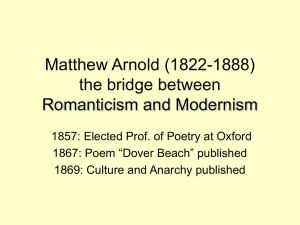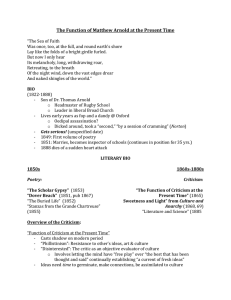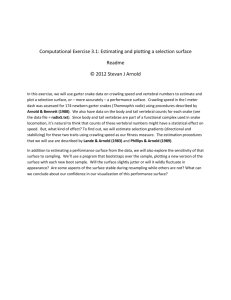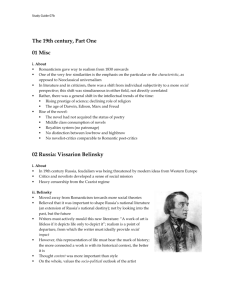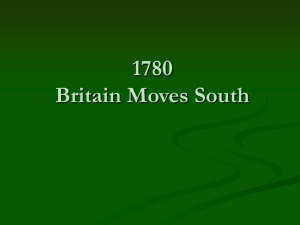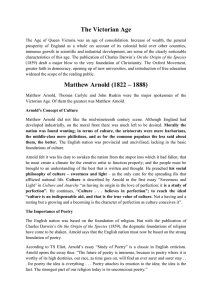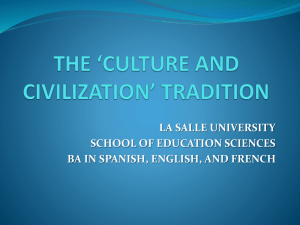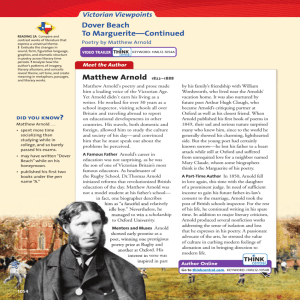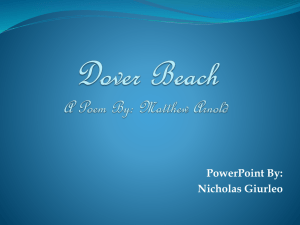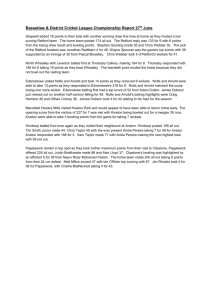Matthew Arnold: Romanticism to Modernism - Analysis
advertisement
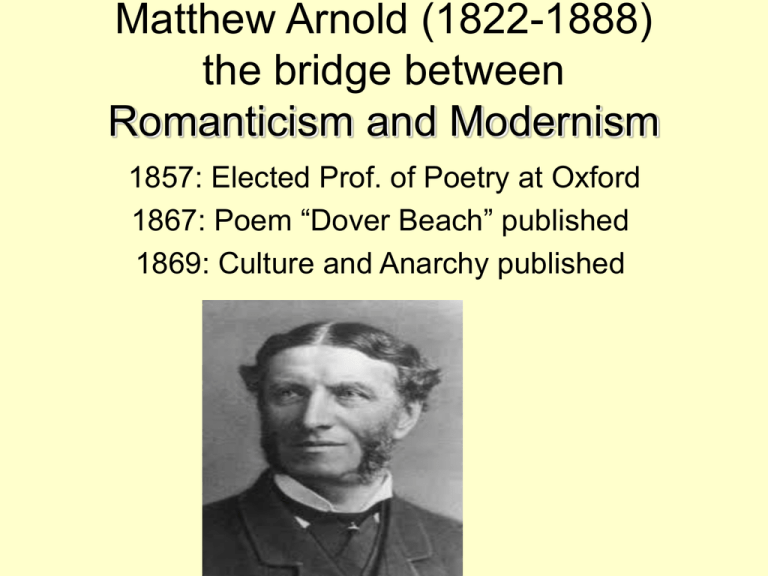
Matthew Arnold (1822-1888) the bridge between Romanticism and Modernism 1857: Elected Prof. of Poetry at Oxford 1867: Poem “Dover Beach” published 1869: Culture and Anarchy published Biography • Matthew Arnold (24 December 1822 – 15 April 1888) was a British poet and cultural critic who worked as an inspector of schools. He was the son of Thomas Arnold, the famed headmaster of Rugby School, and brother to both Tom Arnold, literary professor, and William Delafield Arnold, novelist and colonial administrator. Matthew Arnold has been characterized as a sage writer, a type of writer who chastises and instructs the reader on contemporary social issues. Literary Career • In 1852, Arnold published his second volume of poems, Empedocles on Etna, and Other Poems. In 1853, he published Poems: A New Edition, a selection from the two earlier volumes famously excluding Empedocles on Etna, but adding new poems, “Sohrab and Rustum” and “The Scholar Gipsy”. In 1854, Poems: Second Series appeared; also a selection, it included the new poem, “Balder Dead”. Poetry • Arnold is sometimes called the third great Victorian poet, along with Alfred, Lord Tennyson and Robert Browning • The mood of Arnold’s poetry tends to be of plaintive reflection, and he is restrained in expressing emotion. He felt that poetry should be the criticism of life and express a philosophy. Arnolds philosophy is that true happiness comes from within, and that people should seek within themselves for good, while being resigned in acceptance of outward things and avoiding the pointless turmoil of the world. Prose • Arnolds career as a prose writer divided into three phases: 1) early literary criticism that begins with his preface to the 1853 edition of his poems and ends with the first series of Essays in Criticism (1865); 2) a prolonged middle period (overlapping the first and third phases) characterized by social, political and religious writing (roughly 1860–1875); 3) a return to literary criticism with the selecting and editing of collections of Wordsworth’s and Byron’s poetry and the second series of Essays in Criticism. Arnold as a Poet and a Critic • Double role: as a poet—Arnold is a sick individual in a sick society • As a prose-writer—he is a healer of a sick society • He puts the hope in middle class and predicts that the world of the future would be a middle-class world Death • He died suddenly in 1888 while walking with his wife to catch a tram in Liverpool to meet his daughter, who was arriving on a boat from the USA. Recurring Themes in Arnold • How is a full and enjoyable life to be lived in a modern industrial society? Arnold’s value can be expressed by Browning’s statement: • “The misapprehensiveness (mistake) of his age is exactly what a poet is sent to remedy”. Romanticism and Modernism • Romanticism traits: • How is a full and enjoyable life to be lived in a modern industrial society • Outdoor nature as settings: seashore or river or mountaintop provide something more than picturesque backdrops Romanticism and Modernism • Modernism traits: • The decline of religion • As a poet he usually records his own experiences, his own feelings of loneliness and isolation as a lover, his longing for a serenity that he cannot find, his melancholy sense of the passing of youth
